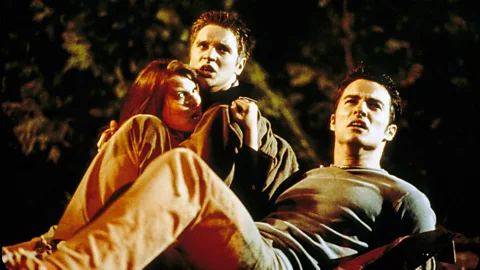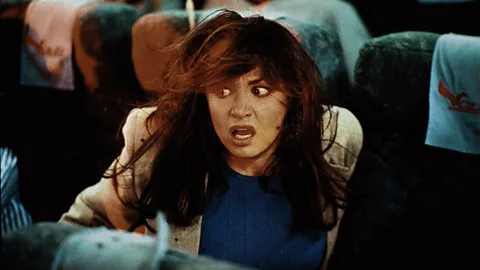'Anytime I get on a plane, I think of Final Destination': The horror film that traumatised millennials
 Alamy
AlamyTwenty-five years ago, the first instalment terrified by making everyday scenarios into death traps. Now, after a 14-year break, Final Destination: Bloodlines is tweaking the formula.
"In death, there are no accidents, no coincidences, no mishaps, and no escapes."
Those are the unsettling words of all-knowing mortician William Bludworth (played by Tony Todd) in the first Final Destination (2000), a horror film without a masked killer, bloodsucking vampire or brain-eating zombies to torment its victims – just the looming spectre of death and a cruel reality: no matter how far we run, or how much we hide, it will come for us all.
Back in the original film, death certainly didn't come peacefully for a group of high school kids and their teacher, who narrowly escaped losing their lives after getting off their plane, the ill-fated Flight 180, just before it exploded, thanks to one of their number having a premonition – only to find that the Grim Reaper wanted to take revenge on them for cheating its design.
 Alamy
AlamySo for 90 minutes, audiences strapped in to watch this invisible antagonist orchestrate some of the most intricate and shocking demises imaginable for each survivor, involving all kinds of routine objects, from a clothesline to kitchen knives. Young audiences around the world left cinemas scared of everything around them. "I must have been 15, seeing it with my friends, and we were grabbing each other," millennial and filmmaker Diana Ali Chire tells the BBC. "The plane thing was just genius because anytime I get on a plane, I think of Final Destination."
The brainchild of screenwriter Jeffrey Reddick, Final Destination followed in the teen horror footsteps of Scream (1996) and I Know What You Did Last Summer (1997) to become a box office success, traumatising an entire generation of cinema-goers along with it. "[As millennials] we grew up on 90s slasher movies and they all have that similar vibe of cool, young stars of the time with a nice balance of scary and entertaining – Final Destination felt so much like it was part of that wave," Mike Muncer, host of the Evolution of Horror podcast, tells the BBC. "I seeing posters for it and thinking, 'This is very much my jam.'" But thanks to its grisly, nihilistic plotline, it also shifted the teen horror needle, adds Muncer. "We didn't have a masked killer anymore, there was no motive, it was just watching people die and being walloped with something entirely unexpected."
The film subsequently spawned four sequels, each one keeping the same basic formula but upping the ante with even more elaborate ways to end human life, before taking a 14-year break. But now, finally, it's back this week with a sixth instalment, Final Destination: Bloodlines, whose storyline ties every previous film together. "It was important for us to thread the needle to make the movie both very clearly part of the franchise canon and part of the lineage of all the previous movies," co-director Zach Lipovsky tells the BBC. "But also [we wanted to make it] incredibly fresh and unpredictable for all the people who love these movies."
From idea to screen
The franchise began when a 27-year-old Reddick was reading a news article while taking a flight from New York back to his home state of Kentucky. The story described a woman who had avoided being in a plane crash by switching flights because of a bad feeling her mother had about her original aircraft. It inspired him to write a "spec script", or unsolicited screenplay, for his favourite TV show, The X-Files, in which "Scully's brother had a premonition", Reddick explains. "[I thought:] what if they cheated death, and death came after them">window._taboola = window._taboola || []; _taboola.push({ mode: 'alternating-thumbnails-a', container: 'taboola-below-article', placement: 'Below Article', target_type: 'mix' });
